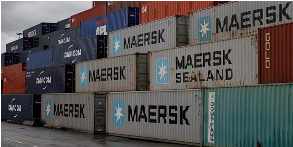
The Danish shipping line has announced this
rate increase for all types of cargo
originating from India and West Asia.
Shipper are worried of the impact this might have on trade. It is to be noted that ever
since the Red Sea Crisis, shippers have been experiencing delays in their cargo
reaching destinations in the US. Now that Maersk is increasing container rates,
shippers are expecting other shipping lines to follow suit, considering that
the detour via the Cape of Good Hope on the southern tip of Africa leads to a
15-day’ delay in reaching their destination from Asia to Europe and further to
the US.
CMA CGM, in December 2023, more than
tripled its freight rates for all types of goods. The FAK has been increased to
$4,750 per TEU (twenty-foot equivalent unit), up from $1,000 two months ago.
The rates include basic freight and bunker-related surcharges.
Usually, the rate increase would be
different for boxes of different sizes—a 20-foot box or a 40-foot box. However,
Maersk’s rate would be the same across all types of containers, an official of
a large freight forwarding company said.
Freight charges for a 20-foot container
to the US today are around $4,200. For suppliers that work on ‘a free on board
(FOB) basis, the rate increase has been eliminated in the delivery of goods. In FOB, freight charges are negotiated in
India, and it is the buyer’s responsibility to pay. However, the risk is
higher when shipping goods on a cost, insurance, and freight (CIF) basis, as
the supplier takes on the cost of shipping and insurance. Any rate increase has
to be borne by the supplier, said a source.
The Red Sea crisis has also impacted Indian exporters
adversely. The detour around the Cape of Good
Hope involves additional time and cost for the major container lines.
While operating costs are estimated to
have increased by an additional $1 million due to the detour, the increase of
$1,000 per container on a vessel with a carrying capacity of 18,000 twenty-foot
equivalent units (teu) works out to $18 million. This mentioned increase is for
a one-way trip from Asia to Europe.
Experts see the lack of national capacity as the root cause of the steep costs
of visiting India.
The Red Sea is a vital waterway for
global trade, particularly for the transportation of goods between Asia and
Europe. The canal handles nearly 12 percent of global trade.